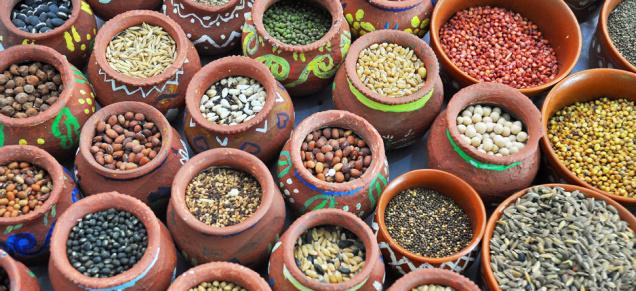Millets have for long been the staple diet for majority of the Indians till recent times. Millets have been the nutrition provider for our forefathers, whose health and stamina are stuffs of legends. But Millets are shockingly absent from the plates of the modern generation.
The fall in millet production began after ‘Green Revolution’, as the impetus shifted to paddy and wheat production. Though the production of millet crop per acre/hectare has increased, the area under production decreased. The most basic counter would be that there has been an increase in production, but when we resort to this counter, we must also take into account the increase in population.
India loses around 1 million children under the age of 5 to malnutrition every year. India has the highest deaths of women and children due to anaemia. This shows how badly nourished the general population is.
While there can be many ways to tackle malnutrition and anaemia, one good way would be the promotion of millet production and utilization of millets in the general diet.
If one observes the above table properly, he would notice that rice and wheat which have been promoted by the govt. since Green Revolution lose to millets in nutritional value by a huge margin. The health of the citizens of a country is very important, not only for the sake of higher life expectancy, but also for the increased efficiency of an individual. A healthy country would spend lesser on medicines and health subsidies. The benefits of promoting millets in the general diet is two-fold, it would firstly help in health benefits and also increase the demands for production of more millets.
millet cultivation has its own advantages. India being a country which depends on rainfall and a good irrigation system for its agriculture needs, faces an acute shortage of water if the region gets below average rainfall. In such cases, farmers who grow water-intensive crops such as paddy and sugarcane face enormous troubles. Millet does not require even half the water as paddy and it can be cultivated in almost any land. As millets require minimum water, it could help in settling water woes in the farmer fraternity and also sort out the water fights between states. Millets are quite persistent and don’t get affected by pests easily, they therefore require minimal insecticides and fertilizers. Every year, the govt. spend almost Rs.50000 crore on fertilizer subsidy, and almost 1/4th of this amount can be utilized for other beneficial purposes if the govt. is willing to promote millet production.
As millets require less fertilizers, it can safely said that they are organic in nature, as compared to other fertilizer-dependent-crops.
So, what are the problems faced by production of millets in India? Firstly, the govt. is yet to promote this highly nutritious grain’s production. In the absence of such a program, naturally the farmers will lack the incentive and motivation to grow millets.
Paddy and wheat find place in PDS system, millets are largely absent in such systems. Farmers don’t find the need to grow millets as they are rarely supported by their respective governments. This attitude has to change so that we don’t lose our native food. The increase in production of millets will not have any benefits if the consumers are ignorant about it.
The consumers should be made aware of the nutritional benefits of millet and so that the consumer is motivated to include it in their general diet.
To conclude, health benefits of millets are too high to ignore them. The funny thing is that the health conscious people go for oats and quinoa as they are promoted by the west, but are ignoring the value of millet which are home-grown. This article in no-way wishes to denigrate oats and quinoa or their benefits, it merely wishes to drive home the point, that millets are being ignored despite being highly nutritious, possibly because they lack a wetern stamp and aren’t being marketed by Multinational Food Giants like Kellogg’s.
